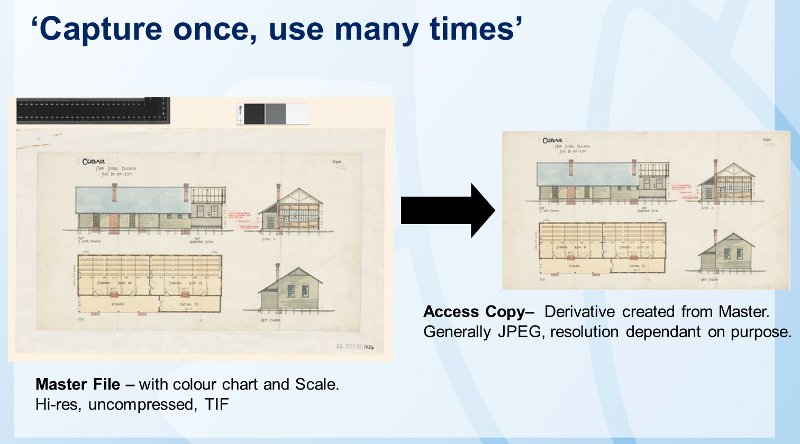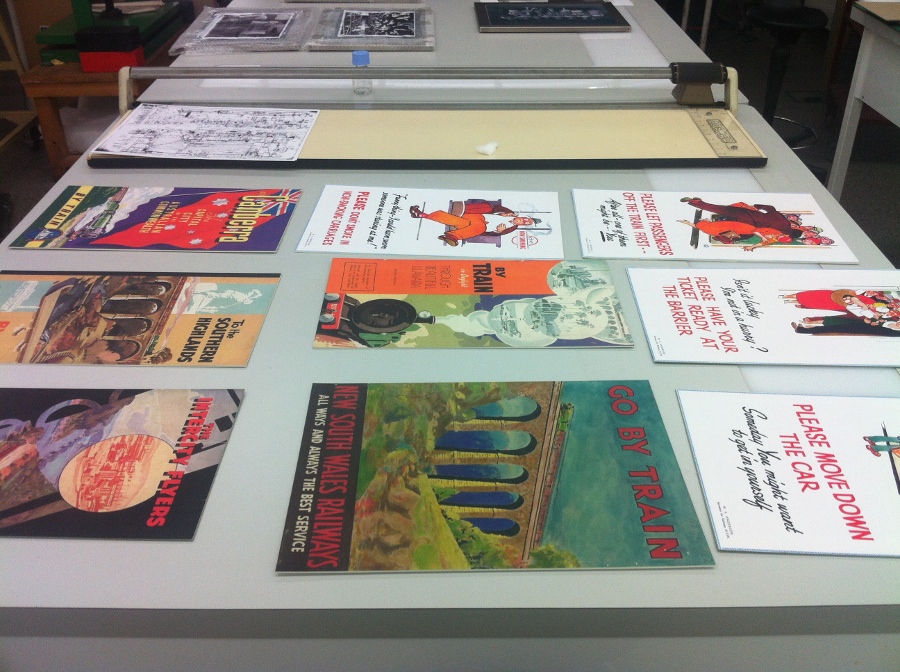So you’ve started to lay out your digitisation plan and have made the decision to scan in-house, outsource the work or split between the two.
This is the second post in a series on starting a digitisation program. The series covers: project planning; technical specifications; handling the archives; scanning tips; file storage, and; metadata and access.
The golden rule
‘Capture once, use many times’
By following this philosophy we digitise without an output in mind.
Avoid the trap of creating a digital image to meet an immediate need. You may find that later on that another digital image (with a different file format requirement) of the same archive is requested. This means you will have to access that archive a second time, resulting in further moving and handling and potential damage.
Always create a high-resolution master file
…regardless of the original purpose. Many derivatives can be created from the one master file to meet many different needs in the future.
Future uses have not yet been thought of
Needs change over time, as does the digital life of an archive. Our archives often make the must-digitise list for a Digital Gallery on our website. A low res jpeg is suitable for web access but a master file is still digitised and a low res derivative created from it. If a web visitor likes a gallery image and submits a copy order request then a high-quality derivative of the master file can be generated without having to access the original item.
Example of the ‘capture once’ philosophy
A while ago we digitised some railway posters and brochures for an exhibition installation at the Western Sydney Records Centre…you remember, the one where our boss woke up at 3am? The documents were digitised as high res (master) TIFFs.
One derivative was generated as a print-quality file to be displayed as a poster in an exhibition case here:
And one derivative was created to become the whopping, great window transparency here at the front doors:
Even if we think an image is only to be used as low/web resolution jpeg for web delivery we still create a high resolution master TIFF. If someone places a reading room request for a high quality image – or our boss has another 3am moment – we can provide it without disturbing the original archive.
Keep your program cost-effective
For a digitisation program to be cost effective and achieve its access and preservation goals the image file needs be created with flexibility in mind. Maximise the preservation/access benefits and avoid unnecessary handling of the original records.
And remember the Golden Rule…
Next week we get into the nitty gritty of technical specifications (without giving you a headache).



